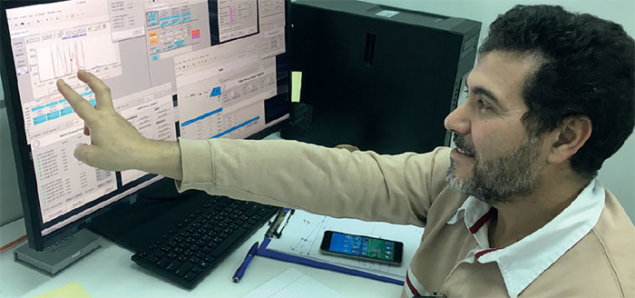
Image credit: SESAME.
At 10.50 a.m. on 22 November 2017, the third-generation light source SESAME in Jordan produced its first X-ray photons, signalling the start of the regional laboratory’s experimental program. Researchers sent a beam of monochromatic light through the XAFS/XRF (X-ray absorption fine structure/X-ray fluorescence) spectroscopy beamline, the first to come on stream at SESAME and targeted at research ranging from solid state physics to environmental science and archaeology.
Obtaining first light is an important step in the commissioning of a new synchrotron light source, and the milestone comes 10 months after SESAME circulated its first electrons (CERN Courier March 2017 p8). Nevertheless, it is just one step on the way to full operation. The SESAME synchrotron is currently operating with a beam current of just over 80 milliamps while the design value is 400 milliamps. Over the coming weeks and months as experiments get underway, the current will be gradually increased.
SESAME’s initial research program will be carried out at two beamlines, the XAFS/XRF beamline and an infrared spectro-microscopy beamline that is scheduled to join the XAFS/XRF beamline this year. A third beamline devoted to materials science will come on stream in 2018. “After years of preparation, it’s great to see light on target,” said XAFS/XRF beamline scientist Messaoud Harfouche. “We have a fantastic experimental programme ahead of us, starting with an experiment to investigate heavy metals contaminating soils in the region.”





